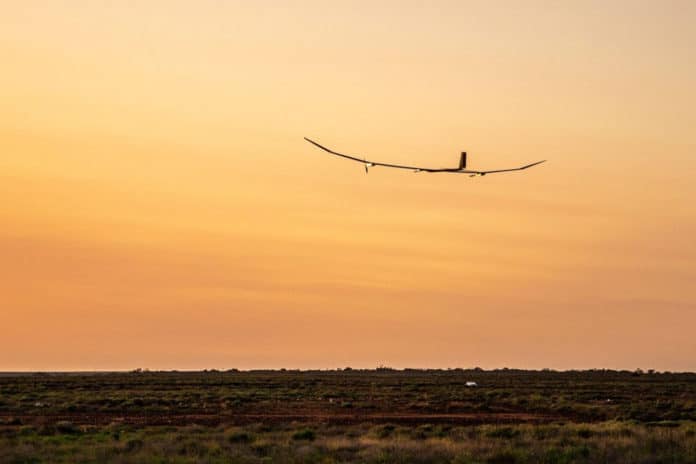The Persistent High Altitude Solar Aircraft (PHASA-35), a solar-electric aircraft, which has the potential to stay airborne for a year, has successfully made its maiden flight in Australia. This test flight paves the way to this new aircraft becoming a game-changer in the air and space market, reducing the gap between aircraft and satellite technology.
Built by Prismatic, a subsidiary of BAE Systems, this high-altitude unmanned aerial vehicle with a long flight duration has been in development for about two years in the UK. Prismatic in Hampshire built two planes last year, which then went through further integration tests at BAE.
The PHASA-35 has a 35-meter (115 ft) wingspan and weighs around 150 kg (331 lb). It is powered by the sun during the day and by batteries overnight. Thanks to the long-life lithium-ion batteries and the highly efficient gallium arsenide solar array, the aircraft could be operated in the stratosphere. In addition, direct-drive electric motors with bespoke high-altitude propellers allow it to fly as high as around 70,000ft and speeds of 50 to 78 knots (93 km/h to 145 km/h), for up to a year.
It will not bring humans on board, nor is it guided by a real pilot: it is a drone that will be used for surveillance, communication, and security applications. When combined with other technologies and equipment, it will offer both military and commercial customers capabilities that are currently unavailable.
The unmanned aerial vehicle also has the potential to be used in the delivery of communications networks that include 5G, as well as providing other services, such as disaster relief and border protection, at a fraction of the cost of satellites.
According to BAE, more flight tests are scheduled for later this year. Once completed, the plane will be marketed in 12 months.
